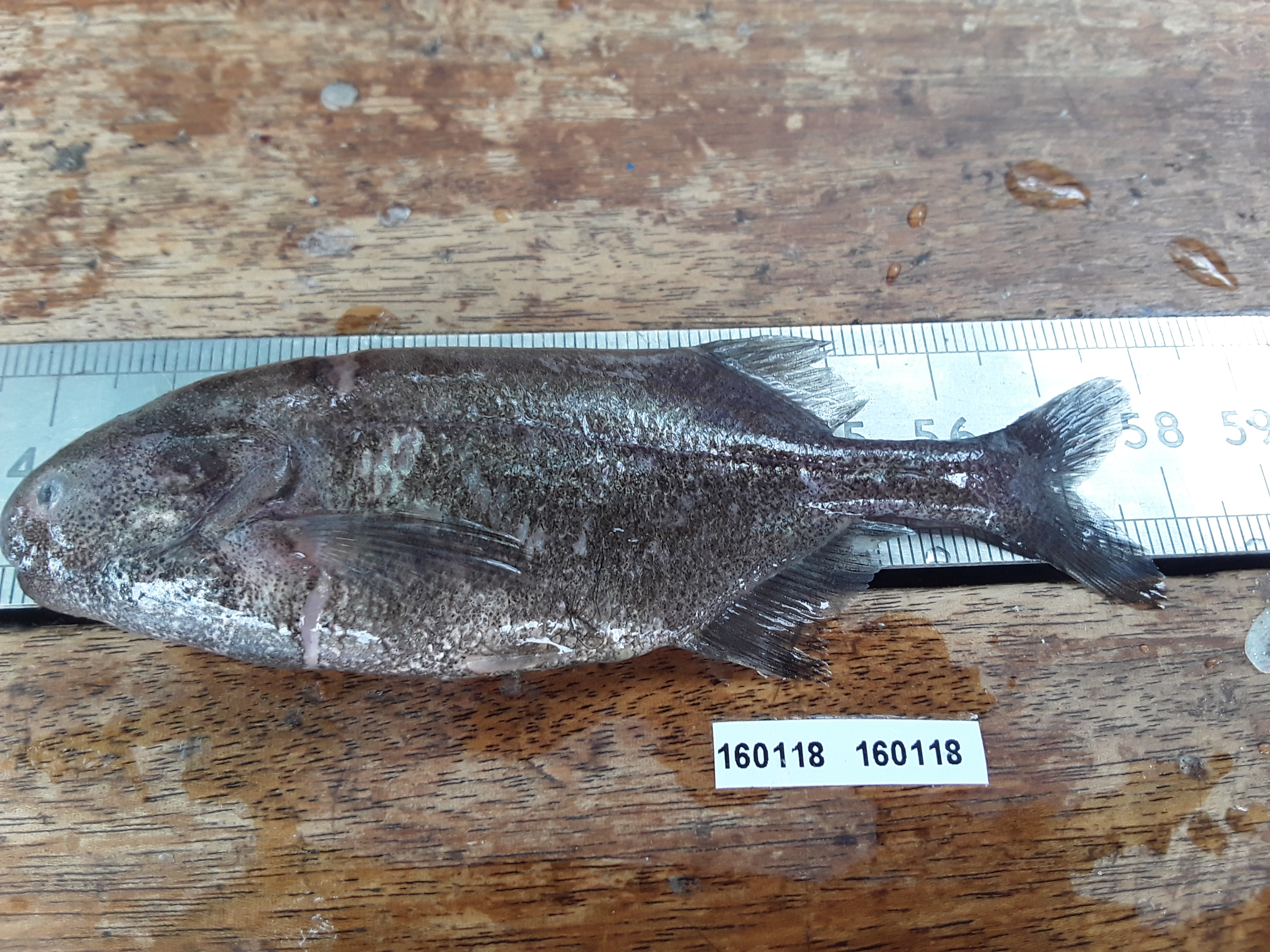Common names:
Dark stonebasher
Local: unknown
Taxonomic tree
Kingdom: Animalia
Phylum: Chordata
Class: Actinopterygii (ray-finned fish)
Order: Osteoglossiformes (Fishes with bony tongue)
Family: Mormyridae (fishes with Elephant-like snout)
Genus: Pollimyrus
Species: Pollimyrus nigricans (Boulenger, 1906)
Number of Occurrancies: 135
Etymology (based on Sharpf & Lazara, 2018)
- Pollimyrus: in honor of Belgian ichthyologist Max Poll (1908-1991); –myrus, conventional termination for generic names of elephantfishes, derived from Mormyrus
- nigricans: blackish, referring to uniform blackish brown coloration
Synonyms: click here to view synonyms
Type locality: Mouth of Katonga River, Lake Victoria. Types at the British Museum of Natural History (BMNH)
General identification features for mormyrids: Elongate body; narrow and distinct caudal peduncle; opercular bones hidden beneath the skin, reduced opening of the branchial cabity reduced; small eyes covered by the skin; naked head, its skin thick and well supplied with mucus glands; small cycloid scales; and muscles of the caudal peduncle modified to form an electric organ, and the elaphant-like snout
Distinguishing characters for the genus
- Short dorsal and anal fins situated posteriorly, the dorsal fin originating posterior to the anal fin origin
- Upper jaw extending beyond the lower jaw, with more than 12 teeth in the lower jaw
- Chin is absent
Distinguishing characters for the species
- Depth of the body contained up to 3-3.5 times in standard length, and length of the head 3.5-4.3 times
- Snout 1/3-1/4 length of the head, rounded and slightly projecting beyond the mouth, which is situated below the nostrils
- Anterior nostril mid-way between the eye and end of the snout
- Teeth notched; implanted in a single series restricted to the middle of each jaw, 5-7 in the upper jaw and 5-9 in the lower jaw
- Dorsal fin with 15-18 rays
- Anal fin with 21-25 rays, its origin in advance of the insertion of the dorsal fin
- Caudal fin with rounded lobes, the basal part covered with small scales
- Lateral line with 46-53 scales; 16-20 around the caudal peduncal, which is 2-3 times longer than deep
- Colour is uniformly dark brown, or lighter ventrally
Special taxonomic notes: This species in old literature is reported as Marcusenius nigricans, which is now a synonym (Froese and Pauly, 2019).
Distribution in Uganda: Lakes Victoria, Nabugabo, and Kyoga; the Kiruni river (Semliki valley)
Occurence: Native
Habitat: Demersal, inhabiting waters just above the bottom; common in marginal vegetation and the fringes of papyrus swamps with soft bottom; potamodromous.
Feeding: Primarily insectivore, feeding on Chironomid larvae.
Biology: The species has low fecundity probably because of its small size, and spwans through the year with peak spawning during therain season. The species larval stages have been recorded in temporary streams flowing into Lake Victoria, suggesting that the species migrates up the rivers to spawn during the rainy seasons. The fish can grow up to 10 cm standard length, but sexually mature indiduals are usually between 8 and 9 cm.
Economic importance/End use: Local subsistence (for food).
IUCN conservation status: click here to view IUCN status
Threats: Clearence of papyrus swamps and marginal wetlants; fishing of juveniles for baits in the Nile perch fishing industry.
Main references
- Greenwood PH. 1966. The fishes of Uganda. The Uganda Society, Kampala. 131 pages.
- Sharpf C, Lazara J.K. 2018. Fish Name Etymology Database v16. www.etyfish.org
- Froese, R. and D. Pauly. Editors. 2019. FishBase. World Wide Web electronic publication. www.fishbase.org, version (12/2019).


